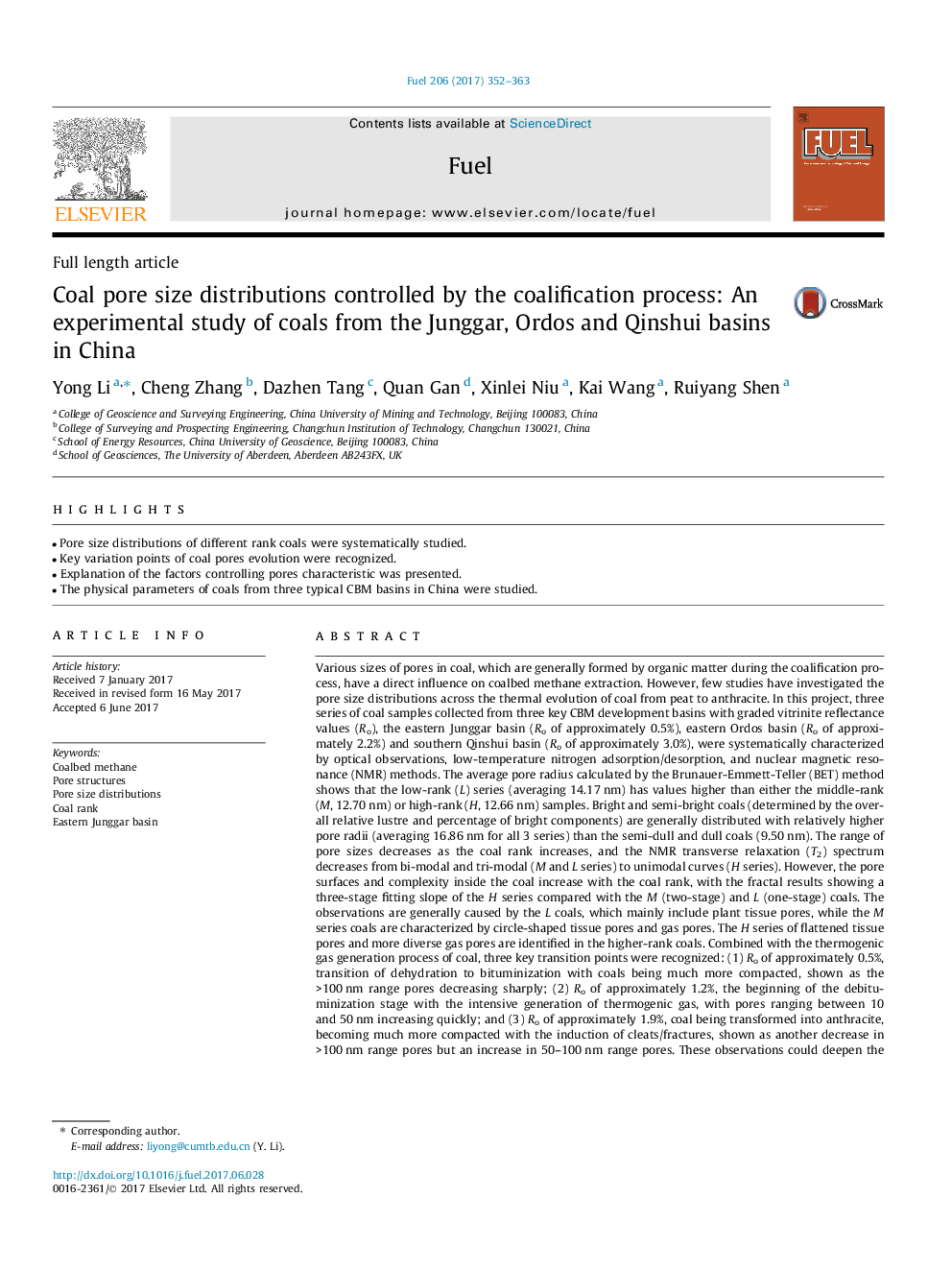| کد مقاله | کد نشریه | سال انتشار | مقاله انگلیسی | نسخه تمام متن |
|---|---|---|---|---|
| 4768580 | 1424958 | 2017 | 12 صفحه PDF | دانلود رایگان |
عنوان انگلیسی مقاله ISI
Coal pore size distributions controlled by the coalification process: An experimental study of coals from the Junggar, Ordos and Qinshui basins in China
دانلود مقاله + سفارش ترجمه
دانلود مقاله ISI انگلیسی
رایگان برای ایرانیان
کلمات کلیدی
موضوعات مرتبط
مهندسی و علوم پایه
مهندسی شیمی
مهندسی شیمی (عمومی)
پیش نمایش صفحه اول مقاله

چکیده انگلیسی
Various sizes of pores in coal, which are generally formed by organic matter during the coalification process, have a direct influence on coalbed methane extraction. However, few studies have investigated the pore size distributions across the thermal evolution of coal from peat to anthracite. In this project, three series of coal samples collected from three key CBM development basins with graded vitrinite reflectance values (Ro), the eastern Junggar basin (Ro of approximately 0.5%), eastern Ordos basin (Ro of approximately 2.2%) and southern Qinshui basin (Ro of approximately 3.0%), were systematically characterized by optical observations, low-temperature nitrogen adsorption/desorption, and nuclear magnetic resonance (NMR) methods. The average pore radius calculated by the Brunauer-Emmett-Teller (BET) method shows that the low-rank (L) series (averaging 14.17Â nm) has values higher than either the middle-rank (M, 12.70Â nm) or high-rank (H, 12.66Â nm) samples. Bright and semi-bright coals (determined by the overall relative lustre and percentage of bright components) are generally distributed with relatively higher pore radii (averaging 16.86Â nm for all 3 series) than the semi-dull and dull coals (9.50Â nm). The range of pore sizes decreases as the coal rank increases, and the NMR transverse relaxation (T2) spectrum decreases from bi-modal and tri-modal (M and L series) to unimodal curves (H series). However, the pore surfaces and complexity inside the coal increase with the coal rank, with the fractal results showing a three-stage fitting slope of the H series compared with the M (two-stage) and L (one-stage) coals. The observations are generally caused by the L coals, which mainly include plant tissue pores, while the M series coals are characterized by circle-shaped tissue pores and gas pores. The H series of flattened tissue pores and more diverse gas pores are identified in the higher-rank coals. Combined with the thermogenic gas generation process of coal, three key transition points were recognized: (1) Ro of approximately 0.5%, transition of dehydration to bituminization with coals being much more compacted, shown as the >100Â nm range pores decreasing sharply; (2) Ro of approximately 1.2%, the beginning of the debituminization stage with the intensive generation of thermogenic gas, with pores ranging between 10 and 50Â nm increasing quickly; and (3) Ro of approximately 1.9%, coal being transformed into anthracite, becoming much more compacted with the induction of cleats/fractures, shown as another decrease in >100Â nm range pores but an increase in 50-100Â nm range pores. These observations could deepen the understanding of the complex pore size distribution differences between different coal ranks and the impact of the thermal evolution on the coal heterogeneity and its reservoir characteristics.
ناشر
Database: Elsevier - ScienceDirect (ساینس دایرکت)
Journal: Fuel - Volume 206, 15 October 2017, Pages 352-363
Journal: Fuel - Volume 206, 15 October 2017, Pages 352-363
نویسندگان
Yong Li, Cheng Zhang, Dazhen Tang, Quan Gan, Xinlei Niu, Kai Wang, Ruiyang Shen,